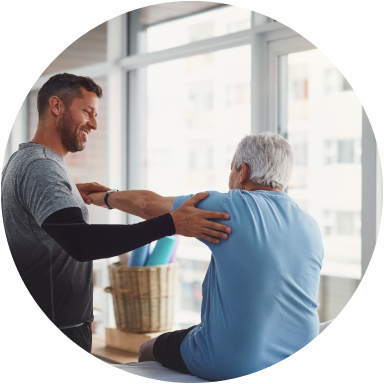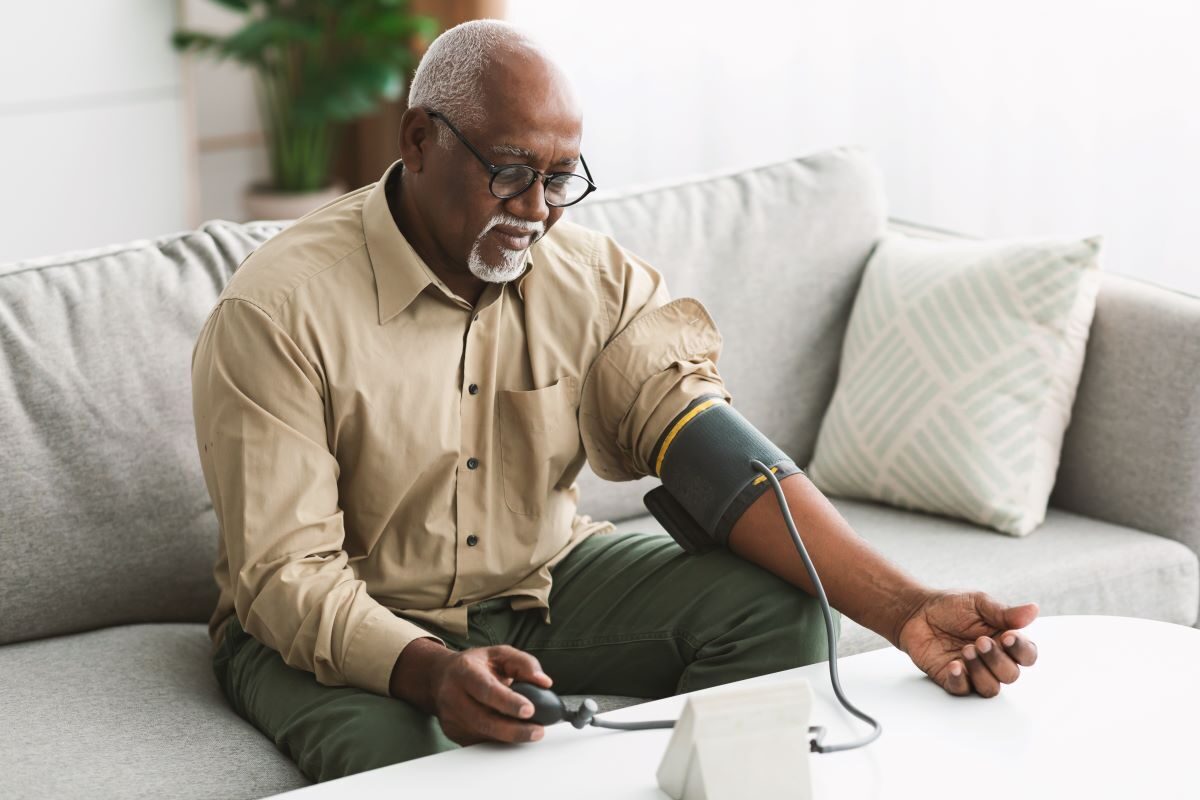Bones, joints and muscles
If you want to protect your musculoskeletal health – or treat your symptoms - we can help.
Understanding bones, joints and muscles
Musculoskeletal conditions are those that affect your bones, joints, and muscles.
They’re a very common type of health problem, can affect people of all ages, and can be short-lived or last a long time. The most common problems with bones, joints and muscles include:
- Back pain - For example, pain in the lower back (lumbago).
- Sprains and strains - Common injuries affecting the muscles, tendons, and ligaments.
Self-care
You can help keep your bones, joints, and muscles healthy by doing the following
At work
How we work can have a serious effect on our physical health. Staying in one position for too long, such as at a desk, can be harmful. Try to maintain a good, seated posture and ensure you stand up on a regular basis. In manual work, make loads lighter or smaller to grasp.
Setting up a healthy home office.
Daily exercise
You can stay healthy with some daily physical activity. Building muscle, bone and joint strength helps maintain your body's resilience. Physical fitness can prevent pain, fractures and falls later in life. Also remember to warm-up before exercising, like with a quick jog-on-the-spot.
The latest workout and exercise inspiration.
Healthy food
Eating a healthy, balanced range of foods should provide what your body needs, and help you keep a healthy weight to avoid stressing your joints. Calcium and Vitamin D are particularly important for bone health.
Discover ingredients to help your health.
Support for Vitality members
You’ve got access to some great benefits to live a healthier life. There are discounts off gyms, fitness gear and more. To find out what you can access with your plan, log in to Member Zone to visit your Healthy Living page.
And whether you're a Vitality member or not, our Vitality blogs can educate and inspire you to make a change. Follow us on Instagram, Facebook, Twitter, YouTube or LinkedIn to be part of our community.
Treatment options
You may receive one, or a combination of treatments for your musculoskeletal problem
Self-care
Self-care at home will resolve many issues. Rest the affected area. Pain medication can also help to reduce the pain so you can gradually try to build up the range of movement.
Physiotherapy
Your physio will give you treatment in person. They may also ask you to do specific exercises at home, or to make lifestyle changes.
Medication
Pain medication may be suggested to help reduce any swelling or pain. Take care when taking pain medications as they have side effects.
Surgery
If appropriate, surgery may be required to improve the movement and function of a joint.
Recovery
Recuperating from injuries may take from a few weeks to a few months. If you’re recovering from a musculoskeletal problem, it’s important to be patient. Allow your recovery to take the time it needs, and if you’re not sure you’re on the right track, consult a healthcare professional.
Treatment options for Vitality health insurance members
With Vitality health insurance, you'll get expert physio care whether you have Out-patient Cover or Core Cover. Log into Member Zone to request treatment.
If you're not sure what treatment you need, you can speak to a healthcare professional on the Health Advice Line. Log into Member Zone to find out more about the Health Advice Line and access the phone number.
Already have a referral?
You don't need a referral to access physiotherapy through Vitality, but you do for other treatments. If you do have a referral for non-physiotherapy treatment, log in to Member Zone to start a care request.
Advice for other Vitality members
If you have Vitality at Work, Vitality life insurance or Vitality investments, the Health Advice Line is still available to you 24/7. Log in to Member Zone to find out more. If you need to visit a GP, use the NHS find a GP service.
Not a member?
If you don't have Vitality health insurance, please speak to your NHS GP or consultant about a treatment plan.
Independent information about private medical treatment
You can find independent information about the quality and cost of private treatment available from doctors and hospitals from the Private Healthcare Information Network (PHIN).
More info
Here’s a simple 'who's who' guide to musculoskeletal roles
Physiotherapists
They help people with physical problems through exercise, manual therapy, and advice.
Orthopaedic consultants
Trauma and orthopaedic consultants and surgeons are medical doctors who diagnose and treat a range of conditions for the musculoskeletal system.
Radiologists
A doctor who uses images to diagnose and treat medical conditions.
Osteopaths
They move, stretch, and massage a person's muscles and joints. This helps to increase mobility, relieve discomfort, and improve healing.
Chiropractors
A type of complementary and alternative medicine. Chiropractors use their hands to help relieve problems. For example, by moving your joints into different positions or stretching your muscles.
Vitality physiotherapy cover
We understand the importance of keeping your bones, muscles,
and joints healthy. That’s why we’ve given all Vitality health insurance
members access to:
-
Discounts on gyms, fitness gear, and more
-
up to six sessions of physiotherapy within our Priority Physio network, plus
-
the option of adding on extra cover for more further or more intensive physiotherapy.
More advice and support
A list of sources of help from UK charities:
- Versus Arthritis - campaigns and information about arthritis and other mobility conditions.
- BackCare - medical research charity dedicated to the management of back problems.
- Orthopaedic Research UK - for people in the UK suffering from poor bone, joint and muscle health.
- Red Cross UK – provide mobility aid services, including wheelchair hire.






